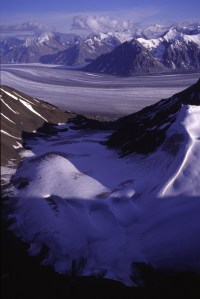 One of the biggest obstacles to reducing carbon emissions is the simple fact that political time and climatological time are very, very different. Politicians in elected democracies think on two- or four-year cycles—if that—while even the leaders of an autocratic state like China, without the pressures of an election, are still limited in just how far ahead they can plan. That’s not just politics—that’s human psychology. We tend not to be very good at planning for the future—just look at the long-term decline in the American savings rate—and that’s just thinking over the scale of a human lifetime. Climatological time is closer to “deep time,” the writer John McPhee’s term for how the planet’s geology changes over millions to even billions of years, a span of time simply unfathomable to human beings. Climate can change a lot faster than that—thanks largely to the billions of tons of greenhouse gases we’ve been pumping into the atmosphere over the past 150 years—but it still moves a lot slower than political time, so it’s easy to put off until tomorrow.
One of the biggest obstacles to reducing carbon emissions is the simple fact that political time and climatological time are very, very different. Politicians in elected democracies think on two- or four-year cycles—if that—while even the leaders of an autocratic state like China, without the pressures of an election, are still limited in just how far ahead they can plan. That’s not just politics—that’s human psychology. We tend not to be very good at planning for the future—just look at the long-term decline in the American savings rate—and that’s just thinking over the scale of a human lifetime. Climatological time is closer to “deep time,” the writer John McPhee’s term for how the planet’s geology changes over millions to even billions of years, a span of time simply unfathomable to human beings. Climate can change a lot faster than that—thanks largely to the billions of tons of greenhouse gases we’ve been pumping into the atmosphere over the past 150 years—but it still moves a lot slower than political time, so it’s easy to put off until tomorrow.
But two papers published over the weekend in Nature Geoscience show that the very length of climatological time can frustrate our efforts to slow global warming—assuming we can begin to do that. In one paper, a group of Canadian researchers decided to see how the climate system might react over the next hundreds of years if greenhouse gas emissions kept rising to a high level until 2100, and then were zeroed out. (Download a PDF here.) As of 2100, CO2 concentration in the atmosphere reach some 1,000 ppm—two and a half times the current level, and well above the 450 or 350 ppm that many scientists believe would be a safe limit. At that point, emissions magically stop—impossible in the real world, but this is a model. Carbon dioxide, however, can stay in the atmosphere for centuries or even longer, so warming doesn’t end when the emissions do. The damage is already done—and continues for the next 900 years.
According to the study, by the year 3000 half the CO2 emitted into the atmosphere before 2100 would still be there, and global average temperatures that rose by some 3.5 C would as we kept emitting greenhouse gases would stay roughly at that level, even after the emissions ended. But that’s just the global average—Antarctica would become much hotter, adding an additional 9 C after 2100. The West Antarctica ice sheet would eventually collapse, raising sea levels by some 13 feet (4 meters), and ocean warming would cause thermal expansion that would lead to additional sea level rise. North Africa would experience desertification, though the Northern Hemisphere and tropics would cool down—though they’d still feel much hotter compared to our current times. While it’s an imperfect study, to say the least—it uses a single climate model, and anything that tries to predict climate effects 1,000 years in the future is not much more than an educated guess—the results do show what kind of scary long-term effects all that carbon might have, even if we do eventually succeed in cutting emissions sharply.
On a shorter time scale, two researchers from Canada and Sweden surveyed the impact that a century’s worth of warming would have on the world’s glaciers, which are already melting. Using temperatures derived from different climate models—and taking future carbon emissions from a mid-level projection by the Intergovernmental Panel on Climate Change—the scientists found that total glacier volume would be reduced by an average of 21% by 2100, though some areas could see as much as 75% melt away. (Download a PDF of the study here.) That would raise sea level by about a dozen centimeters, though that’s almost definitely an underestimate, as it excludes losses from Greenland and Antarctica. And of course, as the first study showed us, climate change won’t stop in the year 2100—even if we succeed in rapidly reducing carbon emissions. Once we change the climate, it will keep on changing.
It’s tough to get our head around a century—after all, back in 1900 we were just beginning to flood the atmosphere with carbon emissions, and look at what’s happened already. An entire millennium is unimaginable, yet the decisions we make as a society now will impact the sort of planet we have in the year 3000—assuming human beings are still around. Skeptics will argue that in hundred years, let alone a thousand years, we’ll be much richer and technologically more advanced, far better prepared to cut carbon emissions and deal with whatever warming will bring. Perhaps—but as these studies show, if we can reduce carbon emissions pretty soon, we’ll be dealing with the effects for hundreds and hundreds of years. Politics may not operate on climatological time, but the Earth does—and so does the species.
More on TIME and glacier melt:


